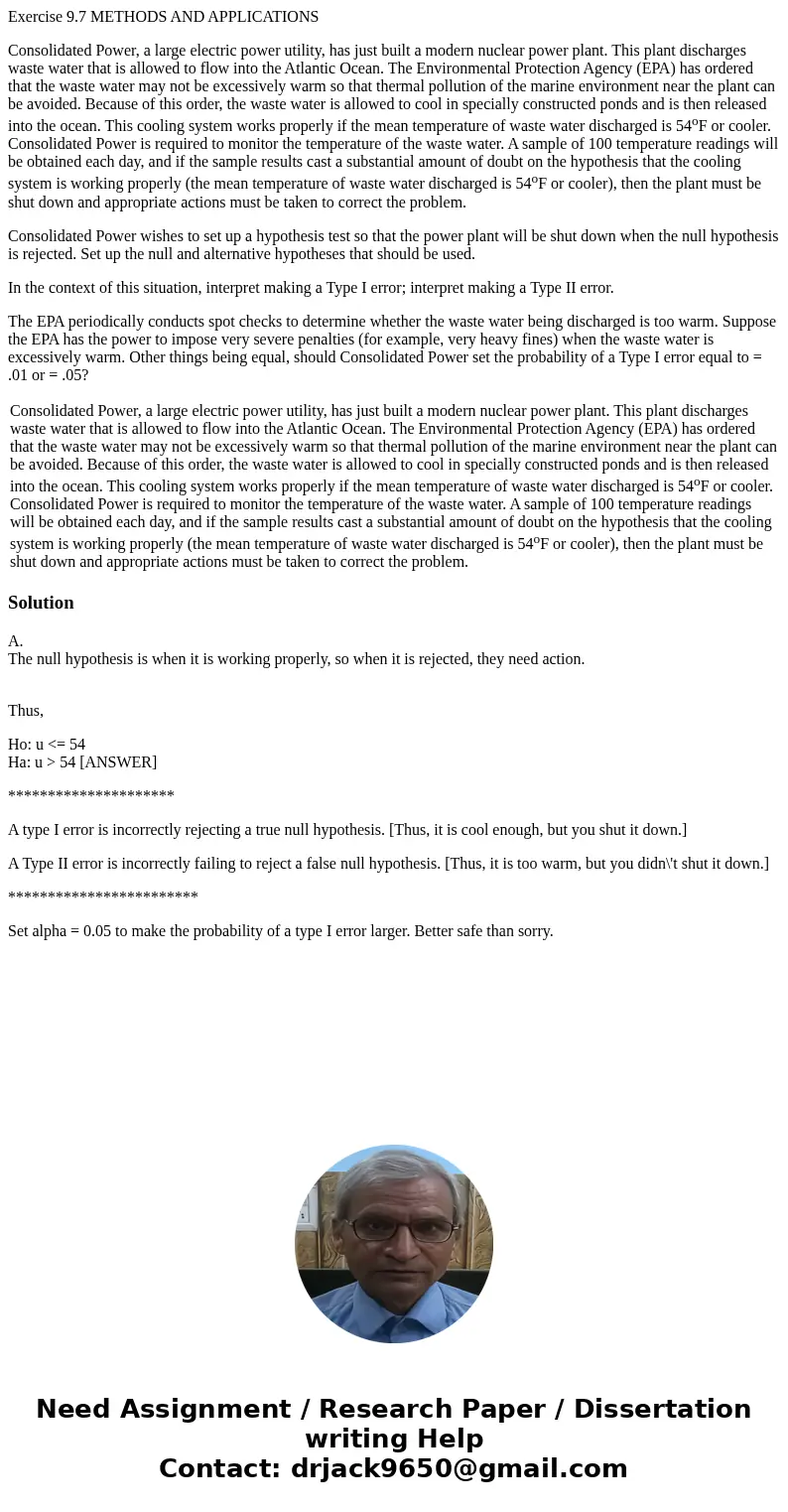Exercise 97 METHODS AND APPLICATIONS Consolidated Power a la
Exercise 9.7 METHODS AND APPLICATIONS
Consolidated Power, a large electric power utility, has just built a modern nuclear power plant. This plant discharges waste water that is allowed to flow into the Atlantic Ocean. The Environmental Protection Agency (EPA) has ordered that the waste water may not be excessively warm so that thermal pollution of the marine environment near the plant can be avoided. Because of this order, the waste water is allowed to cool in specially constructed ponds and is then released into the ocean. This cooling system works properly if the mean temperature of waste water discharged is 54oF or cooler. Consolidated Power is required to monitor the temperature of the waste water. A sample of 100 temperature readings will be obtained each day, and if the sample results cast a substantial amount of doubt on the hypothesis that the cooling system is working properly (the mean temperature of waste water discharged is 54oF or cooler), then the plant must be shut down and appropriate actions must be taken to correct the problem.
Consolidated Power wishes to set up a hypothesis test so that the power plant will be shut down when the null hypothesis is rejected. Set up the null and alternative hypotheses that should be used.
In the context of this situation, interpret making a Type I error; interpret making a Type II error.
The EPA periodically conducts spot checks to determine whether the waste water being discharged is too warm. Suppose the EPA has the power to impose very severe penalties (for example, very heavy fines) when the waste water is excessively warm. Other things being equal, should Consolidated Power set the probability of a Type I error equal to = .01 or = .05?
| Consolidated Power, a large electric power utility, has just built a modern nuclear power plant. This plant discharges waste water that is allowed to flow into the Atlantic Ocean. The Environmental Protection Agency (EPA) has ordered that the waste water may not be excessively warm so that thermal pollution of the marine environment near the plant can be avoided. Because of this order, the waste water is allowed to cool in specially constructed ponds and is then released into the ocean. This cooling system works properly if the mean temperature of waste water discharged is 54oF or cooler. Consolidated Power is required to monitor the temperature of the waste water. A sample of 100 temperature readings will be obtained each day, and if the sample results cast a substantial amount of doubt on the hypothesis that the cooling system is working properly (the mean temperature of waste water discharged is 54oF or cooler), then the plant must be shut down and appropriate actions must be taken to correct the problem. |
Solution
A.
The null hypothesis is when it is working properly, so when it is rejected, they need action.
Thus,
Ho: u <= 54
Ha: u > 54 [ANSWER]
*********************
A type I error is incorrectly rejecting a true null hypothesis. [Thus, it is cool enough, but you shut it down.]
A Type II error is incorrectly failing to reject a false null hypothesis. [Thus, it is too warm, but you didn\'t shut it down.]
************************
Set alpha = 0.05 to make the probability of a type I error larger. Better safe than sorry.

 Homework Sourse
Homework Sourse